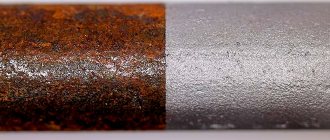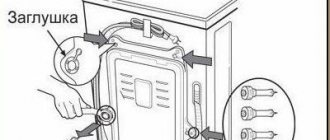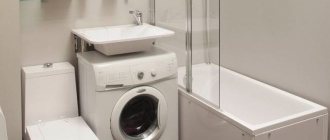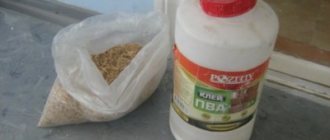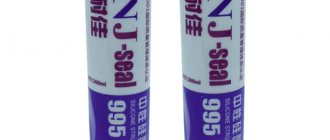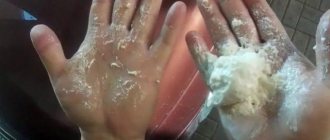- The use of folk remedies
Any household appliance needs care and dishwashers (hereinafter also referred to as dishwashers, PMM) are no exception. This article is devoted to how to clean a dishwasher at home. During operation, grease and scale residues remain not only on the walls of the chamber, but also in other places. Over time, deposits build up, creating a favorable environment for mold and bacteria to grow.
Constantly washing dirty dishes leads to the accumulation of grease and scale in the PMM.
Today, manufacturers such as Bosch, Siemens, Electrolux and others provide their machines with a self-cleaning function. But it solves the problem only partially. If you feel that something musty is coming from the PMM chamber, you need to immediately start cleaning the device.
There are two ways to do this:
- mechanical cleaning of surfaces;
- the use of household chemicals that destroy scale, mold and grease.
Preparatory measures
Before you start choosing and using dishwasher cleaning products, you need to prepare the device.
To wash your machine properly and without damaging it, you must do the following:
- First you will need to remove all the dishes, otherwise they will be cleaned and not the surfaces of the device.
- Check the filter and wipe the door. If the filter is at the bottom, look to see if anything is stuck, such as a spoon. This is important because if something blocks the leak, you will be left with standing dirty water. The filter is a part that captures debris from the inside. The filter screws are unscrewed. Wash it in warm water and soapy water for 10 minutes. Wash the parts where water does not flow during machine operation with soapy water.
- Pull out the bottom post and inspect the drain area. Locate the drain on the bottom of the dishwasher and remove food with your hands before wiping the area with a clean rag. Make sure there are no objects there that could block the drain or cause damage to the pump or scratches.
Only after these steps can you start cleaning the dishwasher.
What happens if you avoid cleaning?
Dishwasher users often do not include cleaning their appliances on their list of household chores. Out of ignorance, many people believe that cleaning systems is nothing more than a procedure imposed by marketers to sell products. Skepticism is good in moderation - until the first blockage and breakdown. Not every dishwasher owner who has ignored cleaning is lucky with the long-term performance of the machine.
If the water supply is too hard, even the most powerful dishwasher, such as Bosch or Siemens, will last no more than 3 years - then inevitable failures will follow. Therefore, to ensure the safety of your equipment, do not forget about regular procedures, otherwise you may need to replace the heating element in the dishwasher or other repair procedures.
Let's summarize. To effectively rid PMM of traces of scale, you need to buy a suitable product and use it according to the instructions. If you ignore our recommendations, the equipment will face a series of breakdowns, which cannot always be eliminated without the help of a specialist.
Rust and mold
Rust and mold are faithful companions if the machine is not washed for a long time. Of course, it is better to prevent their occurrence than to look for cleaning methods.
But if rust and mold have already appeared, how to clean a dishwasher at home?
Helpful steps to remove such contaminants:
- Fill a spray bottle with a solution prepared from boiling water and white vinegar in a 1:1 ratio. This is a good disinfectant against mold.
- Wash the inside of the device with baking soda and vinegar. You can run a wash cycle by running the appliance at the hottest water temperature. You can wipe the walls and all parts with a solution of 1 tbsp. l. soda and 2 tbsp. l. vinegar.
- Bleach will save you from rust. The product should not be used frequently. Bleach residue can end up on food and then into the human body. Use bleach as a last resort.
- Finish tablets will help remove rust. They must be used daily for a week. After 7 days, not only the rust will disappear, but also all the fat.
Try to clean your dishwasher more often and install water filters to minimize the formation of rust.
Mold is even easier to deal with. To prevent it from appearing after each wash, you need to wipe the inside of the car dry and leave the door slightly open.
Tips for using your dishwasher correctly
Tips for using a dishwasher correctly
When a dishwasher is clogged, not every user will understand how to clean it. To ensure that such a need arises as rarely as possible, take note of the advice of professionals:
- Before placing the dishes in the machine, be sure to wipe them with a napkin to remove large food residues.
- From time to time, check the compartments for detergent compositions and tablets - powder should not accumulate in pieces there.
- Place dishes in baskets correctly: on the lower ones - pots, baking sheets, frying pans, dishes and plates, on the upper ones - mugs and other “trifles” with the bottom up (so that water and detergent do not accumulate). Make sure that these items do not come into contact with each other.
- After each use of the unit, do not forget to wipe its surfaces, door and rubber seals with a soft cloth.
- Add special regenerating salts to dishwashing detergents. You can simply buy tablets with water softening ingredients.
- If you notice dirt, remove it immediately, rather than waiting for it to harden before the general wash.
- Do not forget to rinse the coarse filter after each cycle to remove accumulated debris.
- Once the machine has washed the dishes, leave them to dry with the door open. In more modern models, you can turn on auto drying for the same purposes.
Scale
The dishwasher is one of the most time-saving things in the household, but there are a few more things you can do to make it work better.
First you need to remove the scale. It accumulates on the heating elements, which leads to malfunctions of the equipment, the machine begins to heat the water poorly.
To descale your dishwasher you will need vinegar, detergent for this device, citric acid and a toothbrush. Everything can be bought at the household chemical store and in the grocery department.
How to clean your dishwasher:
- Vinegar. Pour one cup of product into a container or cup and place it on the top rack of your dishwasher. Turn on the device, start the cycle. This will safely kill germs and remove scale. Using bleach or any other chemical cleaning product is dangerous. If it is not washed properly, it can settle on dishes and enter the body. Pour 180 g of baking soda into the bottom. It will absorb unpleasant odors. When the temperature of the liquid rises, pause the equipment for 1 hour. This will help you clean your dishwasher better. The vinegar and baking soda will begin to remove dirt from the insides and remove the stink. Then end the program. Wipe the insides after the cycle is complete. Use a dry cotton rag or cloth. Vinegar can be used to clean the dishwasher once a month. This will prevent the growth of bacteria, remove scale and unpleasant odors.
- Citric acid or juice will not only remove odors, they can get rid of grease, rust and scale. You will need 300–400 g. acid or 2 glasses of juice. We pour the first one into the compartment for the cleaning product, and put the second one on the shelf. We start an intensive washing cycle and wait for the program to complete. Then rinse with clean water, starting the rinse cycle. You can clean your dishwasher with citric acid no more than once a week.
- Will get rid of borax scale. This product is sold in pharmacies, is cheap, but acts quickly and effectively. First, the insides are wiped with this product, then sodium borate is diluted with water in a ratio of 1:5, poured into the detergent tray and the usual cycle is started.
After finishing the wash cycle, wipe down the exterior and door seals using dish soap or distilled white vinegar.
Anti-lime products
Let's consider factory offers that will help you professionally deal with plaque without any extra effort. If salt, soda, borax, vinegar have already been tried or you are initially a fan of special preparations, you will find it useful to review the anti-lime substances on the market today.
Frau Schmidt complex cleaner in tablets
“Frau Schmidt” is unique in its kind, because with it it is possible to wash the machine not only from scale, but also from greasy deposits and other types of contaminants. It is precisely because of its complexity that one cannot pin high hopes on it to get rid of persistent accumulations of scale. Therefore, for a complex case it is worth choosing a more powerful composition.
Background information: French Frau Schmidt is available in packs of 2 tablets, costing about 200 rubles per pack.
Top House Express Cleaner
Another universal drug with targeted action for various types of pollution. It is liquid, so the effect is more active than that of tablets. Helps remove scale, grease, mold, mildew, etc. When using Top House, follow the instructions.
Background information: Top House is produced in Germany. The cost of a 0.25 liter bottle is about 300 rubles.
Clean Home - express effect
It has proven itself to be an excellent cleanser. This includes removing scale from PMM parts. If the clogs have not clogged all the pipes, Clean Home will do the trick.
Background information: despite the English-language name, Clean Home is a domestically produced drug. The cost is within 200 rubles.
Electrolux
The product of the same name was developed exclusively for Electrolux brand PMM and is suitable for cleaning machine parts from scale.
Background information: the cost of a 200 ml bottle is 800 rubles, and at such a high price the consumption is only for two uses.
Interesting! Cases have been recorded where Electrolux removed scale 3-4 mm thick.
Any of the above compositions is suitable for internal cleaning of any make and model of machine. At the same time, experts do not advise waiting for the moment when the lime layer reaches a level that blocks the water supply. Clean your machine with any product at least 1-2 times a year, and the equipment will thank you with trouble-free operation.
Important! Along with removing deposits, clean the filter regularly. It is also recommended to periodically clean the spray nozzle, on the blades of which debris can also collect.
Strainer
This part must be washed once a week if you use the dishwasher daily. The filter accumulates a lot of grease, which clogs the cells and causes an unpleasant odor.
The removed filter is washed with clean water or soaked for 10–20 minutes in a soap solution. Then it needs to be washed with clean liquid and replaced.
How often should the PMM be cleaned?
To avoid mold, unpleasant odors, debris and damage, regularly maintain the inner chamber:
- Rinse (wipe) the bottom tray after each wash (food residues may remain there).
- Check the filters and drain every week.
- Periodically leave the car open for ventilation (this will protect against rust and mold).
- Once every couple of months, turn on the high-temperature mode with a special cleaning agent - excellent disinfection, prevention of plaque, blockages of systems, pipes, drains.
If an unpleasant odor does appear, you will have to do a thorough cleaning at home. To do this you need to disassemble the car:
- Unplug the dishwasher.
- Take out the baskets and stands for dishes (compartments for Bosch and Electrolux appliances are equipped with wheels for convenience).
- Remove the strainer (at the bottom of the tray).
- Unscrew the impeller blades (some Hansa, Ariston, Bosch models are equipped with two sprayers - upper and lower).
Baskets
During general cleaning, grease and dirt are also removed from the baskets. Scale also accumulates on these parts.
How to wash:
- Take dishwasher cleaner and take the baskets to the bathtub or place them in a large basin.
- Pour boiling water and add detergent, leave to soak for half an hour.
- Cleaning won't take much time. After soaking, all grease and dirt can be easily removed with a sponge. Wash it until it shines.
- Carefully clean the basket and rinse with clean water.
When the basket is clean, wipe it dry and put it back in place.
Main rules for cleaning work
Cleaning dishwashing equipment from dirt and deposits requires compliance with a number of conditions:
- The appliance door is periodically left open to ventilate residual moisture and specific odors. This will prevent the formation of bacteria;
- After completing each program, wipe the compartments inside and containers with a dry cloth;
- It is better to clean the baskets manually than to rinse them automatically;
- Before placing dishes in the machine, any remaining food is removed;
- hard-to-reach places inside the case are cleaned thoroughly and accurately;
- for high-quality and reliable operation of the device, it is better to spend money on tablets and liquids;
- A lot of dirt accumulates in the rubber seals - it must be removed constantly;
- with excessive accumulation of fat, a film forms on the surface of the PMM, which subsequently destroys the metal components.
Advice! Follow the rules for using household appliances - this way they will remain clean and free of foreign odors inside.
Sprinklers
If the dishes remain dirty after cleaning, the detergent or water is not sprayed well.
The upper sprinkler is easily removed; it has one mounting bracket that can be unscrewed by hand. Dirt accumulates in the nozzles, which is the reason why the sprinkler does not work well.
You can remove grease with regular detergent, soda or vinegar.
You can also clean the holes using a wire that is pulled through them, pushing the fat out. Then we put the wire aside and check how the water sprays by placing the sprinkler under the stream of water.
You can return the part to its place. After installation, rotate the blades and make sure that they rotate freely and do not hit the machine itself.
The dishwasher has been cleaned. Checking how the water sprays. The dishes must be placed at the very bottom of the equipment and the normal cycle must be started.
How do you know when it's time to clean your dishwasher?
According to manufacturers' recommendations, equipment must be cleaned at least once a month, but not everyone strictly follows this rule.
The degree and speed of pollution is influenced by several factors:
- Frequency of application . Not everyone uses a dishwasher every day, handling a small amount of dirty cutlery with their own hands, because it is much faster.
- Nature of pollution . Washing plates, spoons and forks after a vegetable salad is much easier than cleaning the surface of a pot or pan after cooking fatty meat dishes. In the second case, contamination of components occurs much faster.
- Temperature regime . Dishwashers have different water heating modes. They become dirty faster with frequent use of low-temperature cycles. This is due to the fact that at low temperatures fat dissolves much less well than at high temperatures.
- Efficiency of cleaning products . The higher the activity of household dishwashing chemicals, the better it dissolves and removes dirt not only from dishes, but also from equipment components. However, it is risky to use overly aggressive compounds - if the dishwasher does a poor job of washing them out, this can have a negative impact on people’s health. At the same time, very mild detergents may do a poor job of both washing cutlery and maintaining cleanliness inside the device.
Check the cleanliness of the dishes after washing to determine the degree of contamination of the machine itself.
When deciding whether it’s time to start cleaning the dishwasher, you should focus on the condition of the dishes after washing:
- If the cutlery is sparkling clean and squeaks when you try to run your finger over it, everything is fine, the device is working properly, it is not dirty.
- If, after removing the dishes from the dishwasher, stains from dried water and traces of food are visible on them, it’s time to start cleaning.
The idea that when you decide to clean your dishwasher, you just need to run it with detergent is wrong. Before the device begins automatic cleaning, it must be washed manually.
The cleaning procedure consists of the following steps:
- Washing filters, impellers, rubber seals.
- Checking for mold. If it is detected, you need to treat the area affected by the fungus with a detergent.
Expert opinion Galina Valerievna Borodina After manual washing and inspection, you can start automatic cleaning of the dishwasher.
Inlet valve
Such a part can create noise if not used correctly. Check the inlet valve; if water flows into the tank very slowly, this element is most likely clogged. Before starting work, you must disconnect the machine from the electricity.
Check the power by turning on the dishwasher to make sure it is not running. It is also necessary to turn off the water before removing the input switch.
The inlet valve is located under the equipment tank. To remove it, you need to unscrew the nut connecting the water line. Next, remove the screws that connect the valve bracket to the dishwasher frame.
Remove the part and put a new element in its place. Then check the operation of the machine by running a normal cycle.
Is there any point in staying away from chemo?
Why look for substitutes for products produced specifically for PMM? Someone may recall the feminine logic - they say, buy an expensive dishwasher so as not to waste time washing dishes, and then refuse ready-made substances and manually prepare their substitutes.
But the truth, as always, lies in the golden mean - there are moments that should not be forgotten. Reasons why some dishwasher owners refuse "chemistry":
- You should only buy special products for PMM. And this is expensive.
- They contain substances that adversely affect the body.
- The natural product is not only environmentally friendly, but also inexpensive.
Washing the dishes
Now it remains to decide what to wash dishes in the dishwasher so as not to harm either the dishes themselves or the machine
For effective and safe washing, it is important not only to choose a product, but also to follow some rules for careful and effective use of the machine
Rules
Deciding what to wash dishes in dishwashers is only one side of the issue. To effectively wash dishes, you need to remember some rules and recommendations that relate to the placement of dishes, washing mode, and water characteristics.
Read also: Pink Palette Wiki Fandom
The basic rules for washing dishes in an automatic sink are presented in the table.
Rule Photo Description Correct placement of dishes is the key to successful washing.
Placement of dishes

